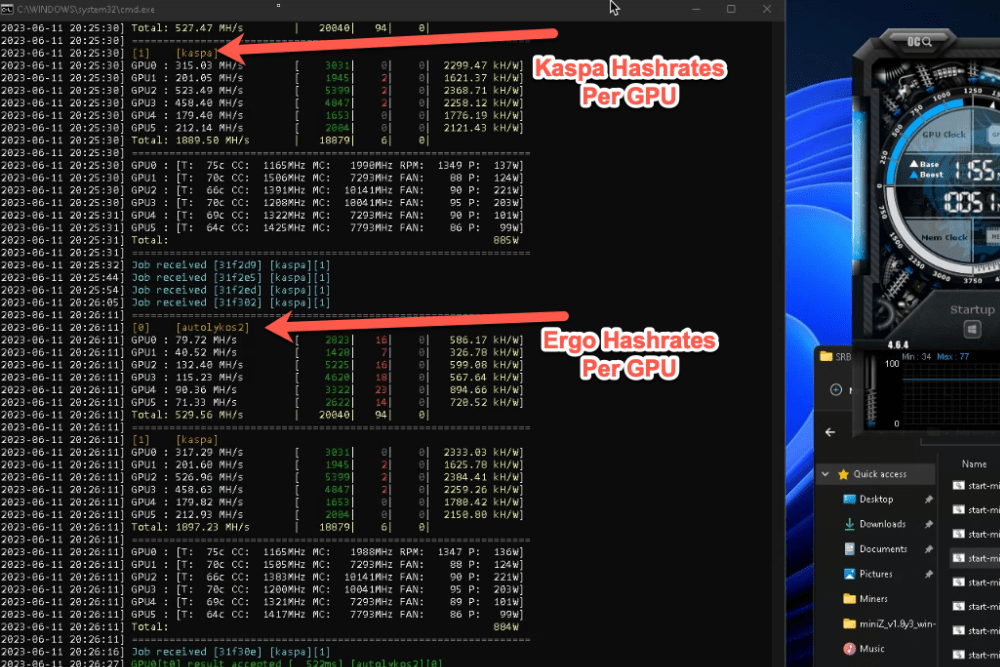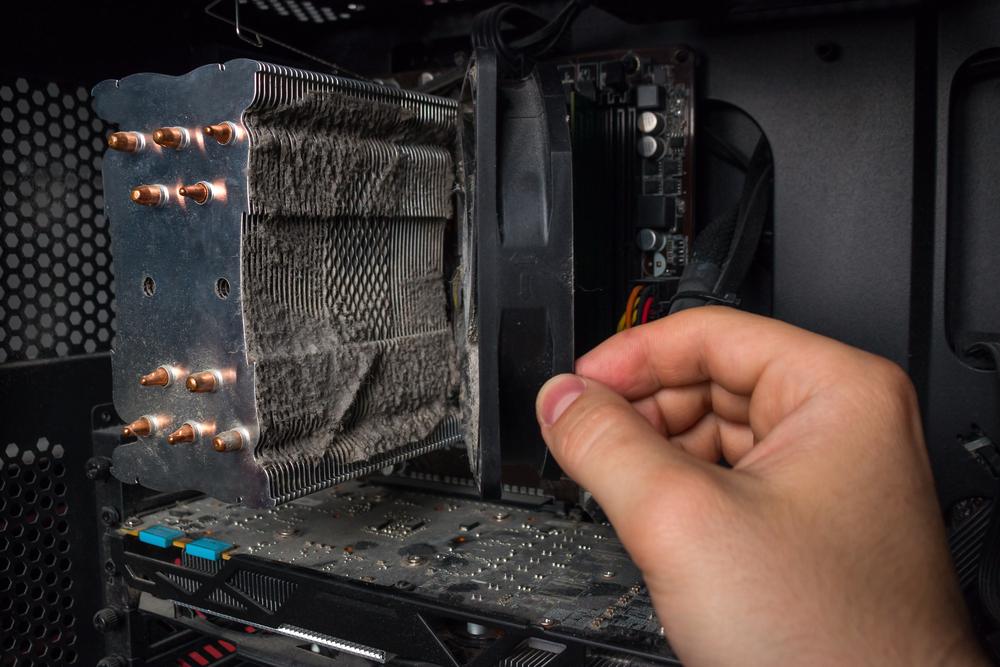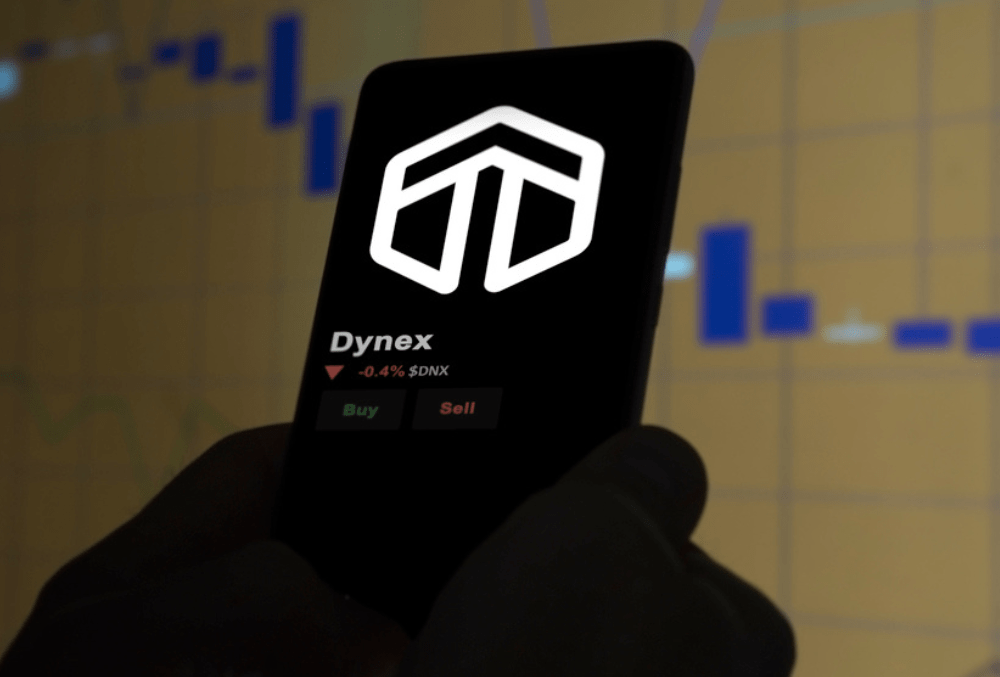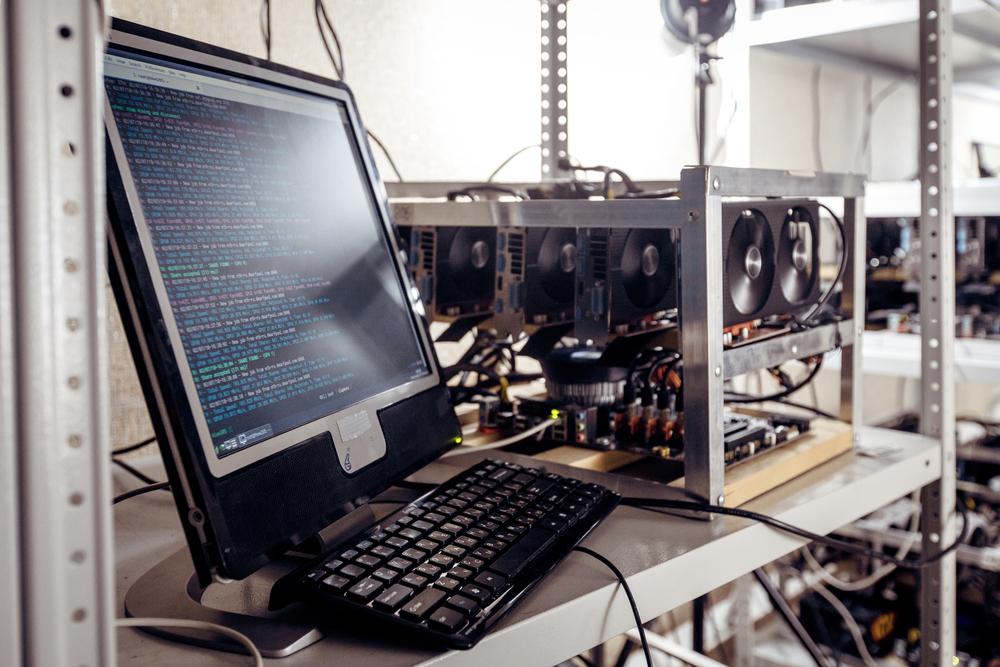In this comprehensive guide, we will delve into the fascinating world of hashrates and explore their significance in cryptocurrency mining. Whether you’re a beginner looking to understand the basics or an experienced miner seeking to optimize your mining operations, this article will provide you with the expertise and insights you need.
What is Hashrate?
Hashrate is the measure of the total computational power being used by a proof-of-work (PoW) cryptocurrency network to process transactions in a blockchain. It can also be a measure of how fast a cryptocurrency miner’s machines complete these computations.
Miners use computers to run computations on complex mathematical puzzles based on transaction data. These systems generate millions or trillions of guesses per second as to what the solutions to these puzzles could be. These are hashes, alphanumeric codes that are randomized to identify a single, unique piece of data.
The goal is to be the first miner to come up with a block of transaction data that contains the correct solution and meets all the criteria to be considered valid. Valid hashes in proof-of-work networks have to be authenticated by other miners by measuring if the appropriate amount of computational power was used to produce the hash. Once the block has been validated, it’s added to the chain and the miner receives a reward in newly minted cryptocurrency.
Hashrate is determined by how many guesses are made per second. The more guesses, the higher the hashrate. The higher the hashrate, the more secure and efficient the network is.
How is Hashrate Measured?
Hashrate is measured by the number of calculations per second, which can range from kilohashes (thousands of hashes per second) to exahashes (quintillions of hashes per second). The unit of measurement depends on the algorithm and the hardware used by the network or the miner.
For example, Bitcoin uses the SHA-256 algorithm, which is best suited for ASICs (application-specific integrated circuits). ASICs are specialized devices that can mine Bitcoin much faster and more efficiently than GPUs (graphics processing units) or CPUs (central processing units). Bitcoin’s network hashrate is currently around 150 exahashes per second.
Monero uses the RandomX algorithm, which is best suited for CPUs. CPUs are common devices that can mine Monero as well as other cryptocurrencies that use similar algorithms. Monero’s network hashrate is currently around 2 gigahashes per second.
Why Does Hashrate Matter?
Hashrate matters because it reflects the security, health, and profitability of a blockchain network and its miners.
- Security: Hashrate is an indicator of how secure a blockchain network is from attacks. The higher the hashrate, the more difficult it is for an attacker to gain control of 51% or more of the network’s computing power and manipulate or reverse transactions. A high hashrate also means that there are more miners validating transactions and maintaining consensus on the network.
- Health: Hashrate is an indicator of how healthy a blockchain network is from fluctuations. The higher the hashrate, the more stable and consistent the network’s performance and difficulty are. A high hashrate also means that there are more miners supporting and investing in the network.
- Profitability: Hashrate is an indicator of how profitable a blockchain network and its miners are from rewards. The higher the hashrate, the more competitive and lucrative the network’s rewards are. A high hashrate also means that there are more miners earning and spending cryptocurrency on the network.
How Does Hashrate Affect Mining Performance?
Hashrate affects mining performance because it determines how fast and how likely a miner can find a valid block and earn a reward.
- Speed: Hashrate affects how fast a miner can solve puzzles and submit hashes to the network. The higher the hashrate, the faster the miner can generate hashes and find blocks. However, speed also depends on other factors, such as latency, bandwidth, and luck.
- Likelihood: Hashrate affects how likely a miner can find a valid block and earn a reward. The higher the hashrate, the higher the probability of finding blocks. However, likelihood also depends on other factors, such as difficulty, fees, and pool size.

How to Increase Your HashRate?
If you want to increase your hashrate and improve your mining performance, you can try some of these tips:
- Upgrade your hardware: You can buy or rent more powerful or specialized hardware that can generate more hashes per second. For example, you can switch from GPUs to ASICs for Kaspa mining. However, upgrading your hardware can also increase your costs, such as electricity, cooling, and maintenance.
- Optimize your software: You can download and install the latest software that can optimize your hardware’s efficiency and compatibility. For example, you can update your drivers, firmware, bios, or operating system for your devices. You can also choose the best mining software or pool for your algorithm and hardware.
- Adjust your settings: You can tweak your settings to maximize your hardware’s performance and stability. For example, you can overclock or underclock your devices to increase or decrease their speed and power consumption. You can also change your fan speed, voltage, or temperature to keep your devices cool and prevent overheating.
Factors Influencing Hashrates
Several factors can impact the hashrate achieved by a mining device or network. It’s crucial to understand these factors to optimize your mining operations effectively. Let’s explore some key elements that influence hashrates:
1. Hardware Specifications
The choice of mining hardware significantly affects the hashrate. High-performance ASIC (Application-Specific Integrated Circuit) miners are specifically designed for mining cryptocurrencies, offering superior computational power compared to traditional CPUs or GPUs. Advanced hardware with optimized architecture and integrated circuits can achieve higher hashrates, resulting in more efficient mining.
2. Mining Algorithm
Different cryptocurrencies utilize distinct mining algorithms. Each algorithm has varying levels of complexity, which directly affects the hashrate achievable. For example, Bitcoin employs the SHA-256 algorithm, while Ethereum Classic uses Ethash. Miners need to select hardware that is compatible with the specific algorithm of the cryptocurrency they intend to mine.
3. Overclocking
Overclocking refers to the process of increasing the operating frequency of mining hardware beyond its default settings. By doing so, miners can push their devices to perform more calculations per second, consequently increasing the hashrate. However, it’s important to note that overclocking may also result in higher power consumption and heat generation, necessitating proper cooling and monitoring.
4. Mining Pool
Joining a mining pool can have a significant impact on hashrates. Mining pools are collaborative groups of miners who combine their computing resources to increase their chances of mining blocks and receiving rewards. Pool mining allows participants to collectively achieve higher hashrates, leading to more frequent and consistent payouts.
5. Network Difficulty
Network difficulty refers to the complexity of the mathematical calculations required to mine a block. Cryptocurrencies adjust the difficulty level periodically to maintain a stable block generation rate. As the network difficulty increases, miners need to invest in more powerful hardware or join mining pools to maintain competitive hashrates.
6. Cooling and Power Supply
Efficient cooling and a stable power supply are essential for maintaining optimal hash rates. Mining hardware generates a significant amount of heat, which can affect performance and longevity. Ensuring proper cooling solutions, such as fans or liquid cooling systems, helps prevent overheating and potential performance throttling. Additionally, stable and sufficient power supply prevents disruptions and ensures consistent mining operations.
Hardware Hashrates
If you want to mine cryptocurrency at home, you need to know how fast and efficient your hardware can perform. This is where hashrate comes in. Hashrate is a measure of the computational power of your hardware in solving cryptographic puzzles and verifying transactions on the blockchain. The higher the hashrate, the more likely you are to find blocks and earn rewards.
But how do you know what your hashrate is? How do you compare different hardware and algorithms? How do you optimize your hashrate and profitability? This is where hardware hashrate websites come in handy.
Hardware hashrate websites are online tools that provide information about the hashrates and earnings for various hardware and cryptocurrencies. They can help you choose the best hardware for your mining goals, estimate your mining income, and monitor your mining performance.
Here are some of the most popular and useful hardware hashrate websites that you can use:
- WhatToMine.com: This website allows you to calculate the most profitable cryptocurrency to mine with your GPU or ASIC. You can enter your hardware model, power consumption, electricity cost, pool fee, and algorithm, and the website will show you the estimated daily earnings, difficulty, block reward, exchange rate, and profitability for various coins. You can also compare different hardware and algorithms using the comparison tool.
- ASICMinerValue.com: This website allows you to find the best ASIC miners for your mining goals. You can browse through a list of ASIC models, sorted by profitability, hashrate, power consumption, efficiency, release date, price, and algorithm. You can also filter by manufacturer, algorithm, coin, or availability. The website also shows you the live income estimation, difficulty, block reward, exchange rate, and profitability for each ASIC model.
- MineTheAsic.com: This website allows you to rent ASIC miners for a fixed period of time and mine cryptocurrency without having to buy or maintain the hardware. You can choose from a variety of ASIC models, algorithms, coins, and rental plans. The website also shows you the expected daily earnings, difficulty, block reward, exchange rate, and profitability for each ASIC model.
- Hashrates.no: This website allows you to check or compare the hashrates of different CPU and GPU models for various algorithms and coins. You can enter your hardware model or select from a list of popular models, and the website will show you the average hashrate, power consumption, efficiency, and profitability for each algorithm and coin. You can also view the top 5 best performing hardware for each algorithm and coin.
- NiceHash.com: This website allows you to sell or buy hashing power on a marketplace. You can use your CPU or GPU to mine any algorithm and get paid in Bitcoin. You can also buy hashing power from other miners and mine any coin on any pool. The website also provides a profitability calculator, a mining software, a mining operating system, a rig manager, and other tools to help you with your mining.
These are some of the best hardware hashrate websites that you can use to improve your mining performance and profitability. However, keep in mind that these websites are only estimates based on past performance and current market conditions. Your actual hashrate and earnings may vary depending on your hardware configuration, software settings, network difficulty, pool fee, exchange rate, luck, and other factors. Therefore, always do your own research and testing before making any mining decisions.
Expert Mining Tip
FAQs - Frequently Asked Questions
The ideal hash rate for mining cryptocurrency depends on various factors, including the specific cryptocurrency being mined, network difficulty, and the miner’s goals. It’s important to conduct research and determine the hashrate required to mine the desired cryptocurrency effectively.
You are looking for the most hash rate that you can achieve with the least amount of power and the highest number of accepted shares. After all, maximizing hash rate efficiency is crucial for optimizing your mining operations and maximizing profitability.
While it’s technically possible to mine cryptocurrency using a regular computer’s CPU or GPU, it’s generally not profitable or efficient. Cryptocurrency mining has become highly competitive, requiring specialized mining hardware with high hash rates to stand a chance of earning meaningful rewards. Eventually, you will want to upgrade your rig.
To increase your hash rate, consider upgrading your mining hardware to more powerful ASIC miners or joining a mining pool. Additionally, optimizing cooling and power supply solutions, as well as overclocking your hardware, can contribute to higher hash rates.
Overclocking mining hardware can increase the risk of hardware failure, as it places additional stress on the components. It’s essential to monitor temperatures, ensure proper cooling, and avoid pushing the hardware beyond its limits to minimize the risk of damage.
Indeed, it is possible to combine multiple mining devices to amplify the overall hash rate. One effective approach is through participation in mining pools, where individual miners pool their respective hash rates to collectively mine blocks. This cooperative effort increases the chances of successfully mining cryptocurrencies and receiving rewards.
In fact, as depicted in this screenshot, I am currently engaged in dual mining two distinct coins simultaneously, employing a total of six GPUs. This capability allows me to optimize my mining operations by efficiently harnessing the power of multiple graphics cards for increased productivity and potential rewards.

Dual Mining Ergo & Kaspa Hashrates
Joining a mining pool offers several advantages, including a more consistent and predictable income stream, increased chances of mining blocks, and reduced variance in rewards. By combining hash rates with other miners, participants can benefit from more frequent payouts.
Conclusion
Understanding the concept of hash rates is essential for anyone interested in mining cryptocurrency. The hash rate reflects the computational power and efficiency of mining devices or networks, directly impacting the chances of successfully mining blocks. By considering factors such as hardware specifications, mining algorithms, overclocking, mining pools, network difficulty, and cooling solutions, miners can optimize their hash rates and increase their potential for earning rewards.
At ResidentialMiner.com, we hope this comprehensive guide has shed light on the significance of hash rates in the context of mining crypto at home. Remember to stay informed about the latest trends and developments in the cryptocurrency mining industry as it continues to evolve rapidly.





















